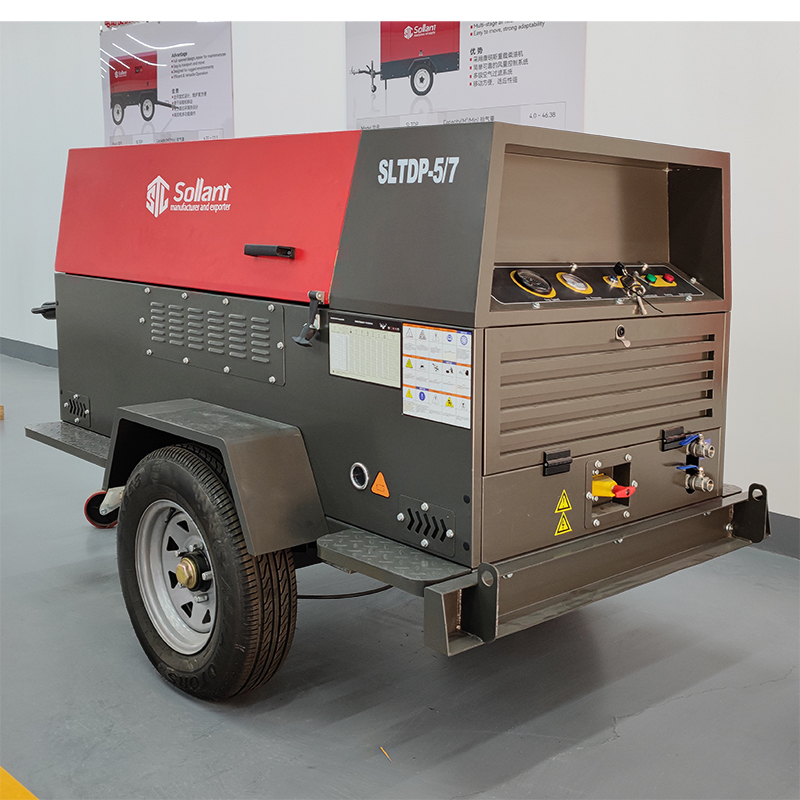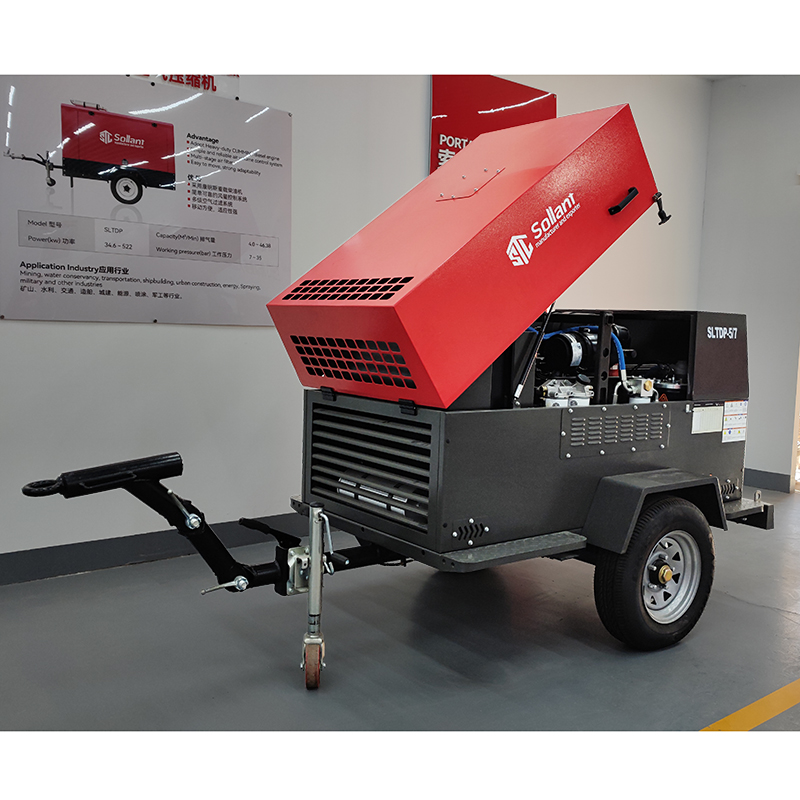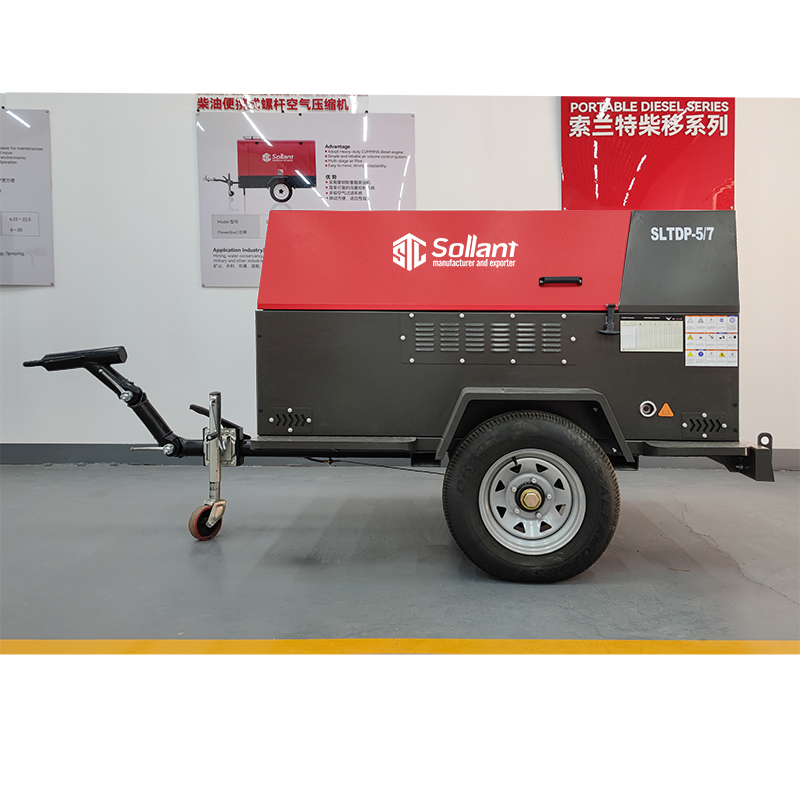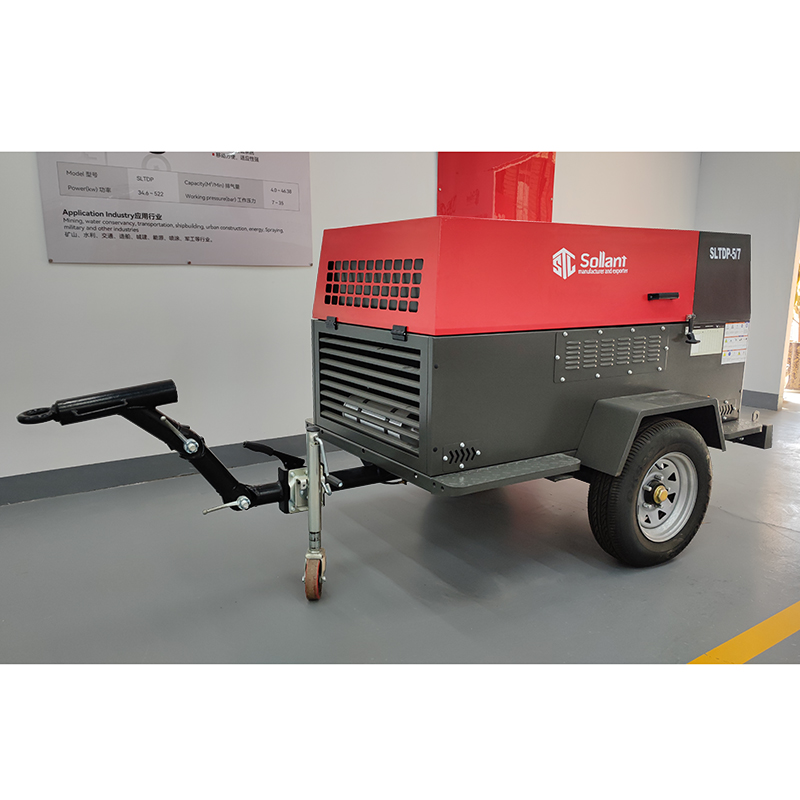How to Properly Adjust the Pressure of a Diesel Air Compressor

A diesel air compressor is a crucial device in many industrial applications. It converts high-temperature and high-pressure gas generated by fuel combustion into kinetic energy. To ensure the system operates efficiently, it’s essential to adjust the pressure correctly. Here, we outline the basic principles and step-by-step procedures for adjusting the pressure of a diesel air compressor.

Basic Principles
The primary function of a diesel air compressor is to convert energy from fuel combustion into kinetic energy, which is then used to perform various tasks. Proper pressure adjustment is critical to maintain the normal operation and safety of the system. Incorrect pressure settings can lead to inefficiencies, system damage, or safety hazards.
Adjustment Steps
1. Ensure the Compressor is Off
Before making any adjustments, make sure the diesel air compressor is turned off. This is crucial for safety and accuracy. Use a pressure gauge to check the current pressure value of the air compressor and determine whether it needs to be increased or decreased.
2. Locate the Pressure Controller
Find the pressure controller on your diesel air compressor. This is typically a knob or dial that can be adjusted with a wrench or torque wrench. Carefully turn the adjustment knob on the pressure controller. When making adjustments, turn the knob gently and wait for a few seconds to allow the pressure to stabilize before checking the gauge.

3. Adjust the Pressure
If the initial adjustment does not achieve the desired pressure, continue to adjust the knob gradually:
- Increasing Pressure: Turn the adjustment knob clockwise. This will increase the pressure.
- Decreasing Pressure: Turn the adjustment knob counterclockwise. This will decrease the pressure.
After each adjustment, allow a few seconds for the pressure to stabilize, then check the pressure gauge again. Repeat this process until the desired pressure value is achieved.
4. Verify the Pressure Setting
Once the pressure adjustment is complete, verify the reading on the pressure gauge. If the pressure meets the expected value, you can proceed to restart the diesel air compressor. Ensure all adjustments are secure and the compressor is ready for operation.

Precautions
1. Safety First
Before adjusting the pressure, ensure the diesel air compressor is turned off. This prevents any accidental operation that could lead to injury or damage. Mark the compressor accurately to indicate it is under maintenance.
2. Double-Check Adjustments
After making adjustments, always double-check the pressure value to ensure it has been set correctly. Incorrect pressure settings can lead to system inefficiencies or potential hazards.
3. Professional Handling
Pressure adjustments should be performed by professionals who are trained in operating diesel air compressors. This ensures that the adjustments are made safely and correctly, maintaining the integrity of the system.
Conclusion
Properly adjusting the pressure of a diesel air compressor is vital for ensuring the s

Benefits of Proper Pressure Adjustment
- Enhanced Efficiency: Correct pressure settings ensure that the compressor operates at optimal efficiency, reducing fuel consumption and operational costs.
- System Longevity: Proper adjustments prevent undue stress on the compressor components, extending the lifespan of the equipment.
- Safety: Maintaining the correct pressure reduces the risk of system failures and accidents, ensuring a safer working environment.
Additional Tips
- Regular Maintenance: Perform regular maintenance checks to ensure all components of the compressor are in good working condition. This includes checking for leaks, inspecting hoses, and verifying that all gauges are functioning properly.
- Training: Ensure that all personnel operating the compressor are properly trained and understand the importance of correct pressure settings and safety procedures.
By understanding the basic principles and following the correct steps to adjust the pressure of your diesel air compressor, you can ensure that your system operates efficiently and safely. Proper maintenance and professional handling are key to achieving optimal performance and longevity for your equipment.



